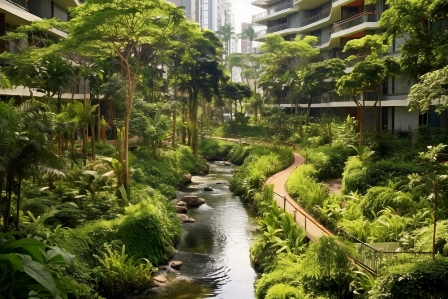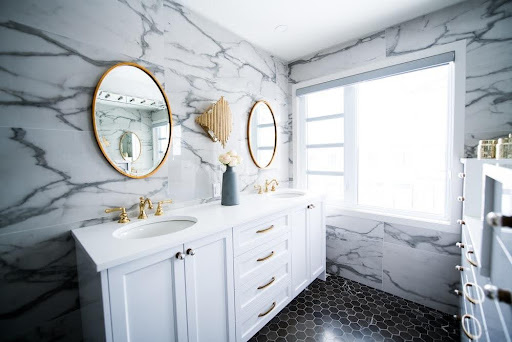In a world increasingly conscious of environmental issues, sustainable landscaping is gaining prominence. As we aim for a greener future, adopting eco-friendly landscaping practices is a crucial step. This article explores the significance of sustainable landscaping and offers insights into how you can make your outdoor spaces more environmentally friendly.
The Importance of Sustainable Landscaping
Sustainable landscaping goes beyond aesthetics. It’s about creating outdoor spaces that benefit both the environment and your well-being. By considering sustainability, you can contribute to reduced pollution, improved air and water quality, and the preservation of biodiversity.
Benefits of Eco-Friendly Landscaping
- Environmental Stewardship: Sustainable landscapes help protect the planet by reducing carbon footprint.
- Cost Savings: Lower maintenance costs and resource consumption.
- Healthier Living: Improved air and water quality leads to healthier living environments.
Native Plants: Your Green Allies
Using native plants in your landscaping not only preserves local biodiversity but also makes your garden easier to maintain. Native plants are adapted to local conditions, reducing the need for pesticides and excessive watering.
Soil Health and Sustainable Landscaping
Healthy soil is the foundation of a sustainable landscape. Techniques like mulching and composting enhance soil quality, promote plant growth, and reduce erosion.
Water Conservation
Efficient water use is a key aspect of sustainability. Learn how to install drip irrigation systems, capture rainwater, and choose drought-tolerant plants to reduce water consumption in your landscape.
Energy-Efficient Landscaping
Strategically placed trees and shrubs can provide shade and reduce the energy needed for cooling your home in the summer. This section explores the concept of “climate-responsive” landscaping.
Organic Pest Control
Say goodbye to harmful pesticides. Discover organic methods to control pests and promote a healthy ecosystem within your garden.
Low-Impact Hardscaping
Learn how to choose eco-friendly materials and designs for your hardscape elements, such as patios and walkways, to minimize environmental impact.
Composting and Mulching
Reduce waste and improve soil health simultaneously through composting and mulching. It’s a win-win for your garden and the environment.
Attracting Wildlife
Encourage biodiversity by creating habitats for birds, butterflies, and other wildlife. Find out how to make your landscape a welcoming haven for nature.
Sustainable Lawn Care
Maintaining a lush lawn can be eco-friendly. Discover practices like grasscycling and using electric lawn mowers to keep your lawn green and sustainable.
Designing a Sustainable Landscape
A well-thought-out design can help you optimize space, reduce maintenance, and enhance the beauty of your landscape. Learn the principles of sustainable landscape design.
Maintenance and Longevity
Sustainability isn’t a one-time effort. This section provides insights into how to maintain your eco-friendly landscape for years to come, ensuring its longevity.
FAQs
Sustainable landscaping offers environmental stewardship, cost savings, and healthier living environments.
You can use drip irrigation, capture rainwater, and choose drought-tolerant plants.
Yes, native plants are crucial for preserving biodiversity and reducing maintenance.
Climate-responsive landscaping involves planting trees and shrubs strategically to provide shade, reducing the energy needed for cooling.
You can attract wildlife by planting native species and providing nesting sites and food sources.
Conclusion
Sustainable landscaping is not just a trend; it’s a way of contributing to a healthier planet and enjoying the benefits of a green, eco-friendly space. By implementing the practices discussed in this article, you can create a sustainable landscape that will thrive for generations to come.












Find Us on Socials